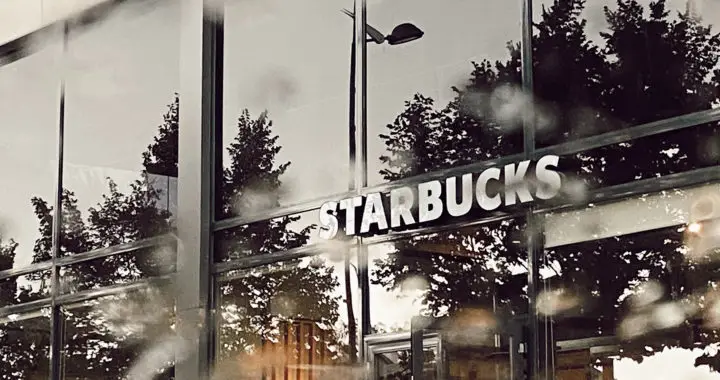Starbucks might be the largest coffeehouse chain in the world but several competitive forces remain a threat both to its profitability and longevity. Note that it operates in the specific coffeehouse market and the greater food and beverage industry that includes more specific markets. This article contextualizes and analyzes the industry position and competitive situation of Starbucks using the Five Forces model of Michael E. Porter.
An Analysis of Starbucks Based on Porter’s Five Forces Model
1. Industry or Competitive Rivalry
Competitive rivalry is a strong force for Starbucks for two reasons. First is that it operates in the specific coffeehouse market in which competition is intense. The second is that it also belongs to the broader food and beverage industry that includes different types of restaurants, as well as food and beverage manufacturers and retailers.
The intensity of competition in the coffeehouse market stems from the different mainstream players in different geographic markets to include Tim Hortons in Canada, Dunkin in the United States, and Costa Coffee in the United Kingdom, among others.
Note that there are also smaller chains of coffeehouses and independent coffee shops that have emerged in specific countries. For example, while it has an established presence in countries like the Philippines, Brazil, and India, it competes with local businesses.
Starbucks has banked on its marketing strategy and aggressive promotion as one of its strengths. However, aside from competing against other coffeehouses, it also competes with other entities and products within the broader food and beverage industry. These entities offer product substitutes and the bigger ones also have solid marketing strategies and specific promotional tactics.
2. Threat of Substitutes
Coffeehouses have different substitutes. For example, instead of the usual coffees, teas, sandwiches, and pastries, consumers can opt to purchase fast-food products from fast-food chains such as burgers and fries or food items in casual and fine dining restaurants.
Manufactured food and beverage products that can be purchased in groceries are also substitutes. These include beverage products from companies such as Coca-Cola and Pepsi and even pantry items such as instant coffee and tea, chips and packed desserts, and ready-to-eat food items including instant noodles and canned goods.
The threat of substitutes for Starbucks is a strong force because of the number of substitute products available in the market, the high level of product differentiation among these substitutes, and the low cost of switching to some of these substitutes, among others.
3. Threats of New Entrants
Putting up a coffee shop can either be inexpensive or capital-intensive depending on the location. However, considering the fact that numerous smaller coffeehouse chains and independent coffee shops operate in less dense cities and areas, the barrier to entry can be either low to moderate, thus posing a threat to companies like Starbucks.
The threat of new entrants is essentially moderate to high. Smaller businesses can populate a specific community and bigger businesses backed by investors or other organizations with access to capital. These demonstrate low barriers to entry in the coffeehouse market.
However, Starbucks has notable competitive advantages. For example, it is an established brand with access to resources needed for regular marketing and promotional activities. It also takes advantage of economies of scale and a tested supply chain that allows it to operate as cost-efficiently as possible compared with its smaller competitors.
4. Bargaining Power of Customers
The bargaining power of customers is a strong force for Starbucks due to the presence of alternative coffeehouses and even product substitutes. The entire competitive landscape discourages the company from setting higher prices while compelling it to operate as efficiently as possible to remain attractive to its customers while maintaining profitability.
In general, this bargaining power is determined by several factors. These include the number of customers or the size of the market, the availability of substitutes, and the relative importance of the product or service to the customer.
Note that the buyer-to-firm concentration ratio is low in the food and beverage industry. There are too many firms offering alternative and substitute products that compete for the hard-earned cash of food and beverage customers. It is also important to note that the industry and its specific markets are characterized by a monopolistic market structure.
Consumers can also be sensitive to price. The prices of coffee and other items sold in Starbucks stores are relatively higher than alternatives and substitutes. Economic downturns and low-income situations would divert customers to inexpensive products.
5. Bargaining Power of Suppliers
Starbucks has a complex and global supply chain, with suppliers and partners located around the world. The company works closely with its suppliers to ensure that it has a consistent and reliable supply of high-quality products, while also implementing sustainable sourcing practices to minimize its impact on the environment.
The bargaining power of its suppliers has a low to moderate impact on its business. Remember that it is the largest coffeehouse in the world. Suppliers would opt to choose established and prominent companies because doing so is more profitable.
Furthermore, because the company maintains a strong relationship with its suppliers as part of its supply chain strategy and corporate social responsibility, it can lower their bargaining power by providing a unique proposition centered on creating a win-win situation among all participants. It is committed to improving the business of its suppliers.





